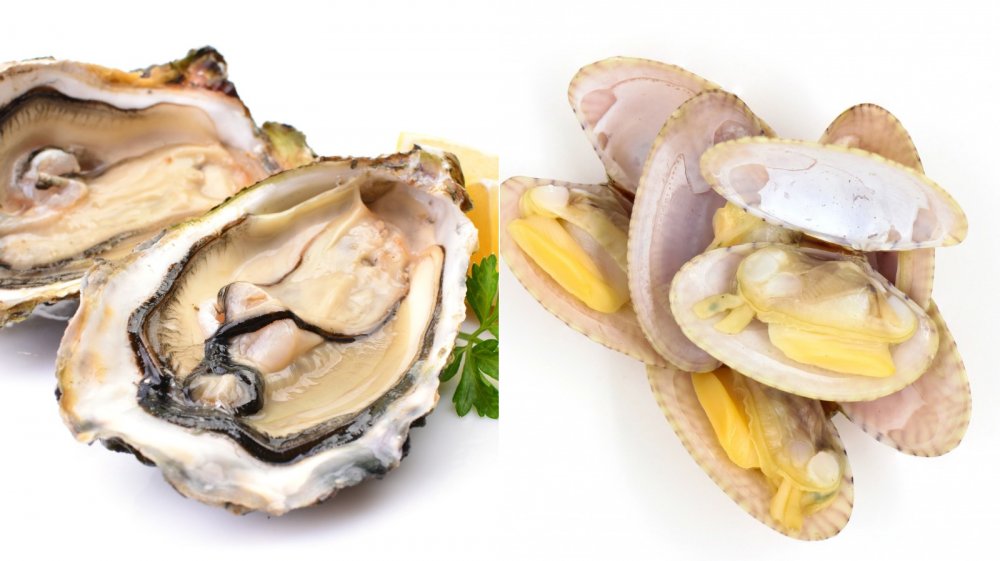Clams Vs Oysters: Which Are Healthier?
Whether you're a shellfish connoisseur or a greenhorn to the seafood scene, you've undoubtedly already decided if you like clams or oysters better. (You may have even decided whether you like New England clam chowder or tomato-based Manhattan clam chowder better, but that's a topic for another time.) According to Foodstruct, these two bivalves share a lot of traits. Both have a two-part shell and two muscles, and people have been eating them for over 165,000 years. It's their differences, though, that set these mollusks apart in taste and nutritional benefits.
Oysters (left) live in salt water, lose their initial muscle foot, and live a more sedentary life. They are low in fat and calories, but high in phosphorus, calcium, potassium, and vitamin B12 according to Spoon University. Oysters, per Time, also contain a good amount of zinc, important for wound healing and immunity.
But clams (right) might edge out oysters as the healthier mollusk. Clams are more often found in fresh water and move around on their muscle foot, and they are also low in fat and calories. According to Spoon University, they are high in iron, selenium, manganese, phosphorus, and vitamins C and B12. Clams also contain copper, which helps the body make collagen and hemoglobin (via Time).
Slurping oyster or clam shells can be a risky business
Anyone who has spent a long night curled up on the bathroom floor after dining on $1 happy hour oysters is already familiar with the risks of eating raw mollusks. According to the CDC, "About 80,000 people get vibriosis — and 100 people die from it — in the United States every year." Vibriosis is caused by a bacteria called vibrio, found in coastal waters where oysters grow, and, unfortunately, the best way to eliminate the bacteria is to bake, broil, or boil raw seafood before consuming (via CDC).
If you can't resist a raw oyster (and we know you can't), find comfort that oyster farming has come a long way. According to The Kitchn, water-quality monitoring and testing has resulted in safer shellfish landing on seafood towers.
There are also concerns around contamination in shellfish. Research has suggested that some oysters have high levels of cadmium. The good news? According to Faye Dong, professor emerita of food science and human nutrition at the University of Illinois, your body can clear out something that's contaminated if you only eat shellfish once or twice a week (via Time).

